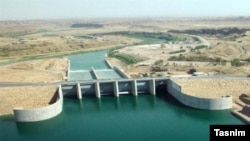Following heavy rains and widespread floods in 2019 that replenished Iran's dams, electricity generation has again declined in 2020, according to figures published by the energy ministry on Sunday, June 28.
Water flowing to dams from March to May 2020 declined by 38 percent compared with 2019 leading to a larger reduction in hydroelectric power generation. In this period Iran generated four terawatts of hydroelectric power, which was 54 percent less than in the same period last year.
Iran was suffering from a persistent drought for nearly a decade until the end of 2018 and the first months of 2019 when heavy rains inundated most of the country, causing huge floods in some areas. The government hailed the end of the drought and announced that the country’s dams were full to capacity. However, experts warned that this was temporary and if rains decline reservoirs will become half-empty again.
Heavy precipitation did not repeat in the 2020 season and authorities had to reduce outflow of water from dams. This in turn reduced power generation.
The energy ministry says that now the country has to heavily rely on fossil fuels to generate electricity. Most of the fossil fuels used are dangerously polluting agents. During last winter, smug and bad odors engulfed the capital city Tehran for weeks.
In January the head of Iran’s Department of Environment disclosed that power plants are using a harmful and foul-smelling oil bi-product called Mazut, which the country cannot export due to U.S. sanctions. As storage capacity is full, the government uses Mazut for power generation.
In Western countries Mazut is broken down and diesel oil is produced.





